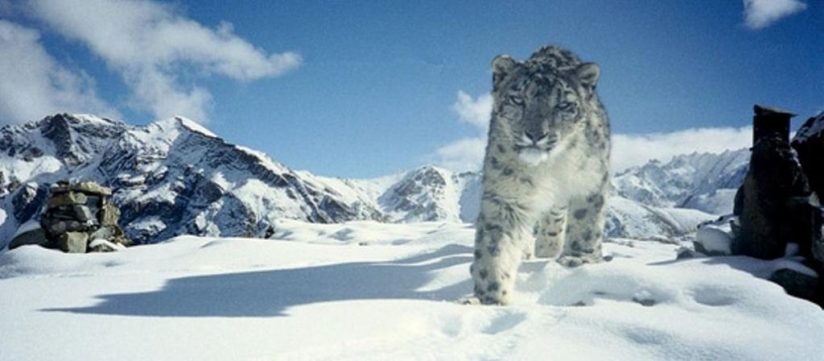
Srinagar- In November this year, the wildlife conservationists erupted in joy after a year-long survey finally bore fruit as infrared camera traps captured the images of a snow leopard— the endangered species.
The images became the evidence that the landscape of Kashmir also holds the population of snow leopards.
The images of the snow leopard in the upper Baltal-Zojila region were recorded by the team lead by Munib Khanyari, Programme Manager of National Conservation Foundation (NCF).
“This was the moment when we came to know that our landscape also holds the population of snow leopards,” Regional Wildlife Warden, Kashmir, Rashid Yahya Naqash told Kashmir Observer.
In 2019, 12 countries including India decided to start the population assessment of snow leopards. The government then chose five some states and Union Territories as the potential landscape for the snow leopards which included Jammu and Kashmir, Himachal Pradesh, Uttarakhand, Sikkim and Arunachal Pradesh.
The potential habitat of snow leopard is around one lakh square kilometers in India and in J&K it is around 12,000 sq km.
In UT, the wildlife department of Jammu and Kashmir along with several NGO’s have formed various teams to understand the presence and abundance of snow leopards in the region.
The surveys are being collaborated with National Conservation Foundation (NCF) and are being conducted under the Snow Leopard Population Assessment of India (SPAI) project funded by the Ministry of Environment Forests and Climate Change.
“The teams have been conducting surveys around Gurez, Thajiwas, Baltal-Zojila, Warwun, and Kishtwar landscapes for a year now,” said Naqash.
He said they used three methods to locate the Snow Leopard population.
1) Occupancy (based on interview and survey), 2) Camera trapping and 3) Gene based (Sample collection and analysis)
Naqash said they have roped-in the Wildlife division of Sher-e-Kashmir University of Agricultural Sciences and Technology (SKUAST) and Zoology department of Kashmir University as knowledge partners.
He said the potential snow leopard habitats in J&K were installed with grids, based on a randomized grid search approach.
The department in its interim report of Kashmir region noted that given the topography, accessibility, and habitat heterogeneity, a uniform grid size of 5 x 5 instead of 15 x 15 km was unanimously adopted for SPAI surveys.
“Then we assigned the grids to different agencies for assessment of snow leopards,” Naqash said.
In Kashmir region, there are 44 grids in Gurez and Thajiwas landscape and 38 grids in the Pir Panjal range that, according to the department, will be covered in the coming months using questionnaire-based surveys, camera trapping and scat collection from October onwards. In the Jammu region, the department notes that there are still 120 sampling grids that need to be sampled.
It further added the entire study area (12000 km2) was divided into 491 sampling units (grid-cells) of 5 km x 5 km each.
“Camera trapping and key informant interviews, using structured questionnaires were used to document the presence of snow leopard in the region,” the report said.
The report further revealed that the camera traps or genetic surveys in a spatial capture recapture framework will be carried out for intensive sampling at randomly selected areas across the state that represent different snow leopard habitats and variations in snow leopard density.
The department conducted several workshops for the volunteers and other partners to understand how to conduct the survey.
Khanyari told Kashmir Observer that in the Gurez sector they found musk dead, Asiatic ibex, brown bear and a number of animals.
He said the findings will go on and will be completed next year.
Follow this link to join our WhatsApp group: Join Now
Be Part of Quality Journalism |
Quality journalism takes a lot of time, money and hard work to produce and despite all the hardships we still do it. Our reporters and editors are working overtime in Kashmir and beyond to cover what you care about, break big stories, and expose injustices that can change lives. Today more people are reading Kashmir Observer than ever, but only a handful are paying while advertising revenues are falling fast. |
| ACT NOW |
| MONTHLY | Rs 100 | |
| YEARLY | Rs 1000 | |
| LIFETIME | Rs 10000 | |











